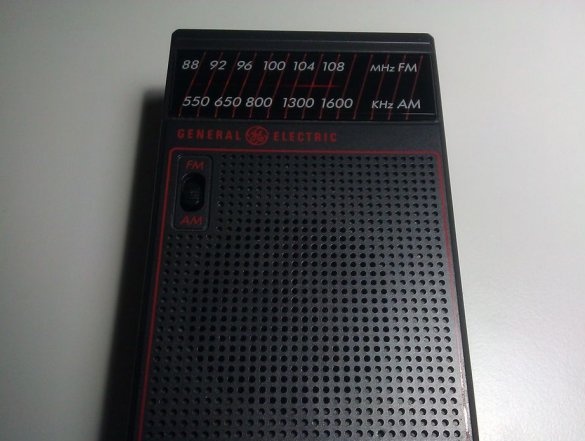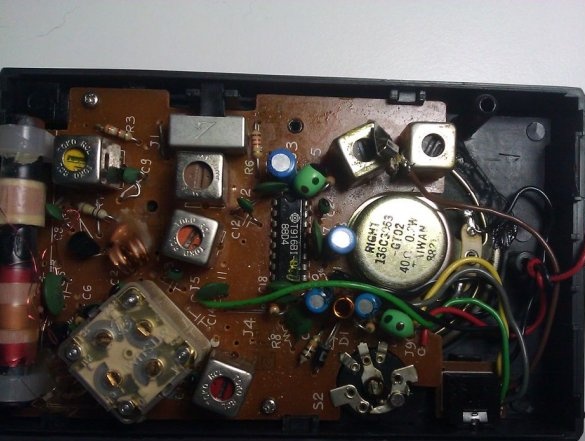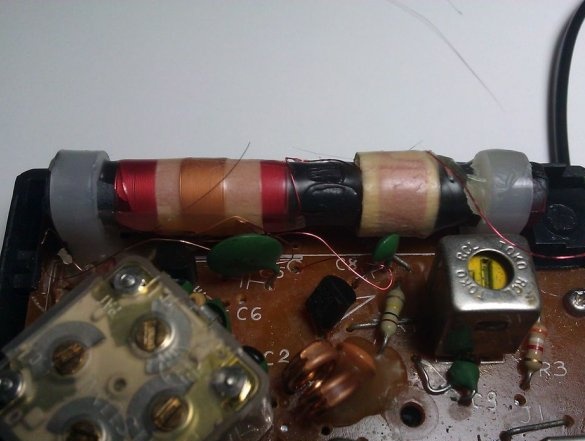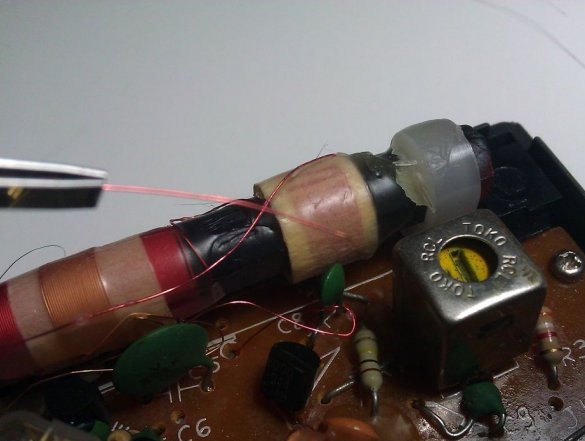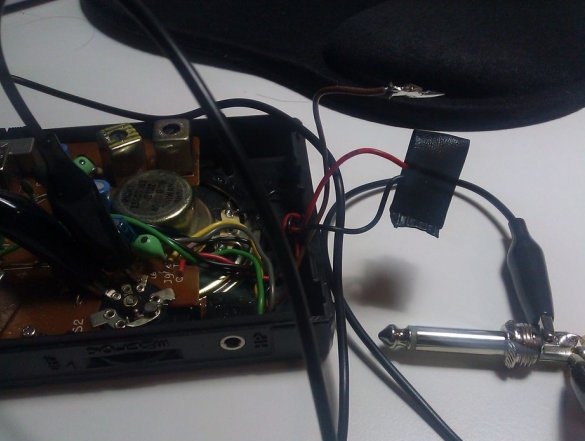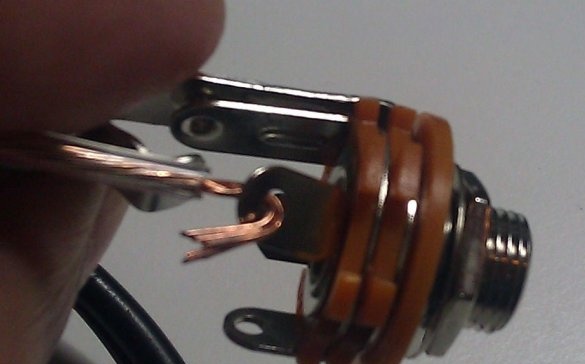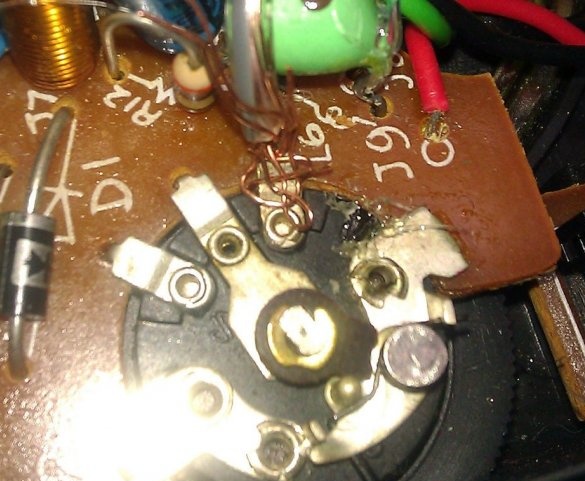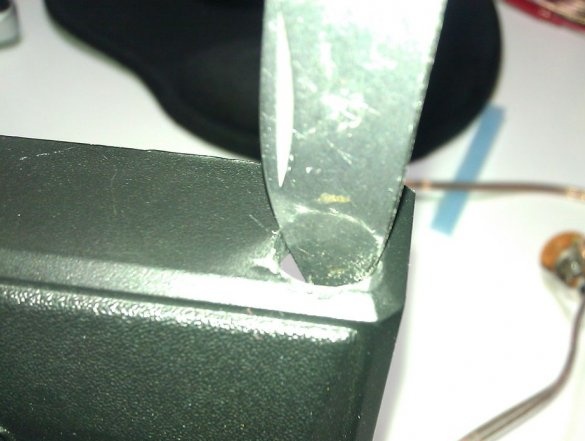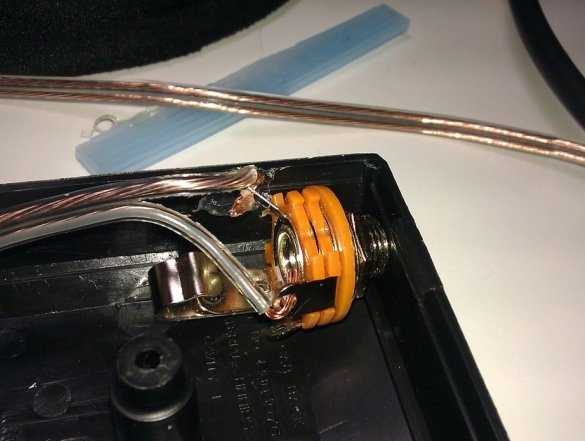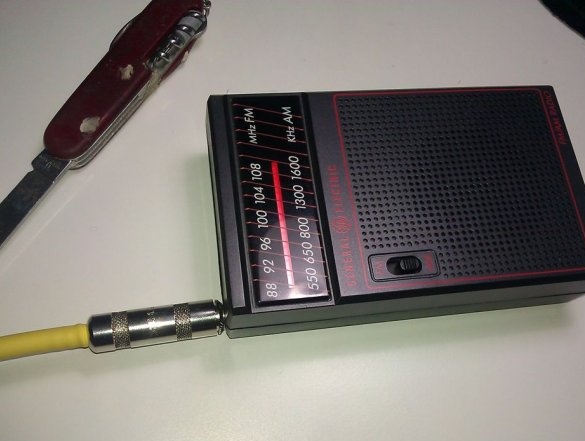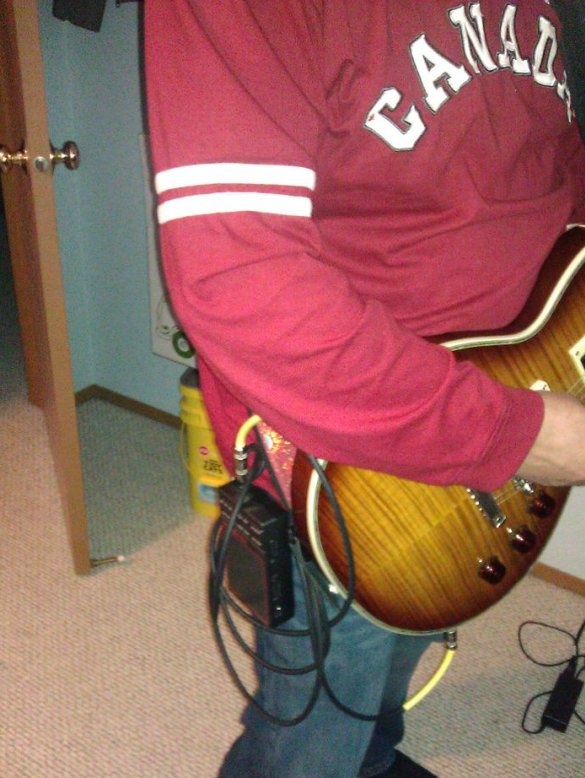At first glance, the KDPV shows an ordinary pocket-sized radio, released in the nineties or zero. But the function of a guitar combo is added to it, which is very convenient, since there are almost no ready-made pocket combos. He is low-power, but powerful at home and not required. Minimum alteration is required, with or without the original function, and what exactly needs to be done - the author of Instructables says this under the nickname mhuerta2.
To remake the radio, you need two wires with a cross section of 24 to 28 AWG, which corresponds to a range of 0.3 to 0.5 mm2as well as a 6.3 mm jack jack, which corresponds to the plugs on the cables of most electric guitars.
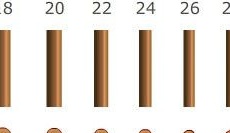
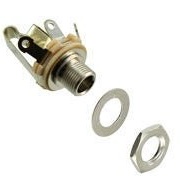
The master opens the radio case and discovers a generally standard board there: a magnetic antenna, a variable capacitor, coils with trimmers, a microcircuit, and other components.
The receiver’s magnetic antenna is used only for reception in the medium wavelength range. If there are no mid-wave radio stations in your area, you can have a snack from the wires going from it to the board. Then the range switch will be simultaneously the mode switch: the VHF range is selected - the radio is used for its intended purpose, the CB range is selected - only the signal from the electric guitar passes. If you live, for example, in St. Petersburg, where there are medium-wave radio stations, you do not need to disconnect anything. When playing the electric guitar in this case, you have to tune the receiver to an unoccupied part of the range, resigned to the fact that a quiet hiss will be superimposed on the music.
By applying a “crocodile” clamp with a signal from an electric guitar to various outputs of a variable volume control resistor, the master determines which ones are suitable for this. But random action is not necessary. You can immediately connect the jack housing to the receiver’s common wire, and the remaining pin of the jack to that of the side terminals of the variable resistor, which is not connected to the common wire. If this resistor lead is connected with an additional switch, then to the socket, then to the conductor going to it on the radio board, you will not have to do any manipulations with the magnetic antenna. All functions of the receiver will be saved, and they can be selected separately.
The master once again makes sure that everything works while connecting the electric guitar like this:
And then plugs in the jack:
Drills a hole in the radio housing for the socket and installs it:
Connects an electric guitar and plays:
The battery compartment of most of these receivers is designed for two AA elements. They can be replaced by two batteries of the same type, which is convenient when using budget chargers that can charge such batteries only in pairs.

